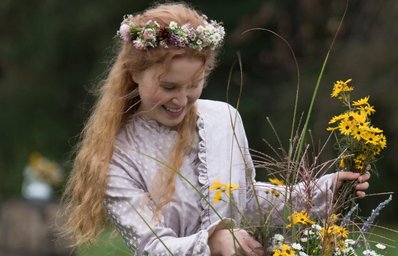What girl doesn’t like flowers? I know we are in the 21st century, and maybe flowers are not the favorite option for some girls out there, but personally, there is nothing more romantic and beautiful than receiving the right flower. Perhaps now they are seen as the first, fast, and safe option, but they once delivered messages people could not speak aloud in the past.
Floriography is the word used to represent the language of the flowers, and it came from the Victorian Era (1837-1901), becoming very popular in those years. Its symbolic meaning allowed a cryptic way of communicating between lovers. However, its roots go back to the 15th century in Persia and Turkey. Harem women replaced words with flowers allowing the expression of forbidden feelings to their lovers outside the harem. It was not until the 17th century that it was introduced to Europe, and in the 19th century, french publishers began to decode the meaning and publish it. However, the language has no universal definition; different cultures and societies set up their meaning and symbolism.
The language of flowers has many meanings, even in minor details, from how you are handed the flowers to how tightly they are bound together. To answer yes or no, you needed to deliver the flowers with the correct hand, right meaning “yes” and left “no.” Color played a key role and was also related to the type of flower. A red rose openly expressed feelings of love, but a red tulip was a confession of love. Expectedly, the roses are particular in the role of color.
| White rose: “purity, innocence, reverence, a new beginning, a fresh start.” |
| Red rose: “love, I love you” |
| Deep, dark crimson rose: “mourning” |
| Pink rose: “grace, happiness, gentleness” |
| Yellow rose: “jealousy, infidelity” |
| Orange rose: “desire and enthusiasm” |
| Lavender rose: “love at first sight” |
| Coral rose: “friendship, modesty, sympathy” |
Yet, pointing out the important relation between color and type of flower, the carnations also have a specific color meaning assigned to them.
- Pink: “I’ll never forget you”
- Red: “my heart aches for you”
- Purple: “conveyed capriciousness”
- White: “the sweet and lovely”
- Yellows: “romantic rejection”
Plants and flowers have a variety of meanings, and despite most of them having been forgotten, their symbolism has been impactful in art, literature, and event culture throughout history. The following table provides more examples, but the link at the bottom will show you more if you are interested in it.
| Aloe | Affection and also grief |
| Angelica | Inspiration |
| Apple blossom | Preference |
| Arborvitae | Unchanging friendship |
| Begonia | Beware |
| Bittersweet | Truth |
| Chives | Usefulness |
| Daisy | Innocence, loyal love, “I’ll never tell” |
| Hollyhock | Ambition |
| Lavender | Distrust |


